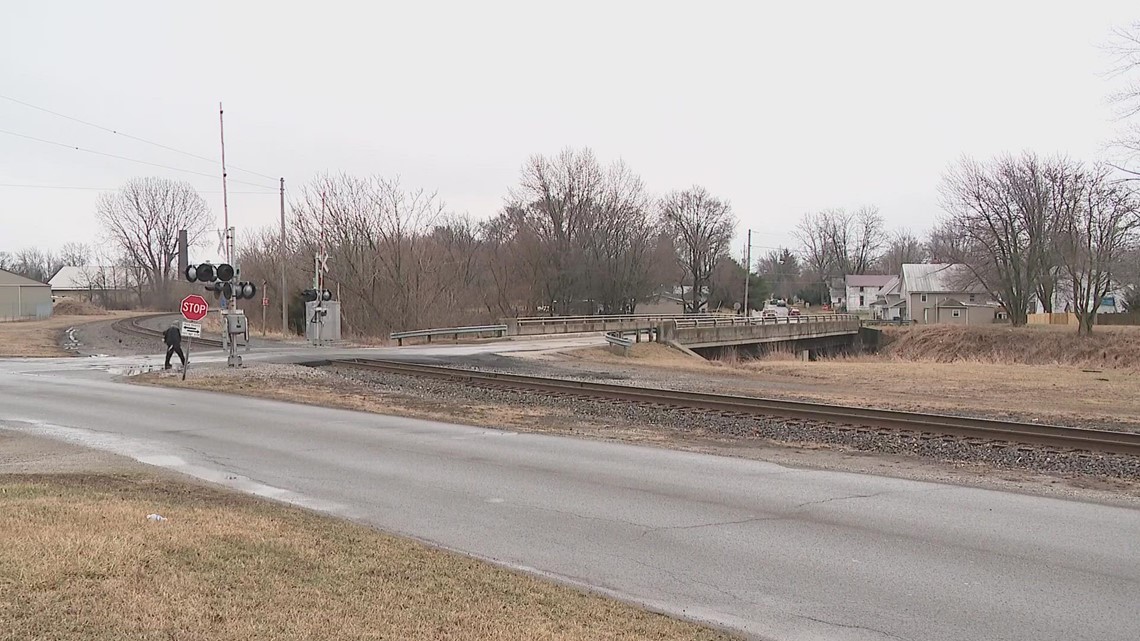Distance between Ohio’s Level 1 hazmat teams causes concern in small cities

East Palestinian trains were not considered “High Dangerous Goods trains” and required notification to local authorities.
Kenton, Ohio — Kenton, with a population of about 8,000, is served by the CSX train several times a day.
The town has an average of 12 trains per day, according to section chief Bruce Donnelly. Like many small town fire departments, Kenton’s nearest Level 1 Hazardous Materials team is in Columbus, over an hour away.
This distance raises the question for those living in Kenton what would happen if a toxic chemical derailment like East Palestine happened here?
“Departments of our size and volunteer fire departments were like, ‘We don’t have the resources to do this. What are the first steps to keep people safe?'” Donnelly said.
Ohio has 10 different Level 1 teams spread across the state, and smaller cities like Kenton and Eastern Palestine don’t have immediate help from hazardous materials workers.
The current dangerous goods team locations are:
- Allen County Hazardous Materials Team
- Toledo Fire/Rescue
- Cuyahoga County Hazardous Materials Team
- Lake County Hazardous Materials Team
- Dayton Area Hazardous Materials Team
- columbus fire
- Summit County Hazardous Materials Team
- Butler County Cooperative Hazardous Materials Team
- Cincinnati Fire Department Hazardous Materials
- Greater Cincinnati Hazardous Materials Team
Ohio receives approximately 66 million tons of rail freight each year. Recent train derailments in eastern Palestine have raised concerns about whether small fire departments are staffed and trained to deal with major derailments, as rail freight frequently enters the state. It’s because I’m coming.
“For what we normally see, I think we’re pretty well prepared for the normal instances here, but not the massive scale for that kind of thing,” Donnelly said. Told.
To keep first responders informed about what is passing through a particular area, fire departments have access to apps that let them know in real time what some Class 1 rail cars are carrying. Many railcars do not need to be reported unless they are carrying specific items.
Federal regulations begin reporting when a train is carrying Hazardous Combustibles (HHFT) as defined in 49 CFR 171.8. or one train carrying 35 or more laden tank cars of class 3 flammable liquids throughout the train consist. ”
of Ohio Department of Public Safety “The Ohio Department of Homeland Security receives this information and shares it with the local EMA and local emergency planning committees. Common Class 3 flammable liquids include acetone, adhesives, paints, gasoline and perfume. , ethanol and methanol.”
East Palestinian trains were not considered “High Dangerous Goods trains” and did not require notification to local authorities.
“We need to know when the train carrying hazardous materials through Ohio is coming,” Gov. Mike DeWine said at a news conference Tuesday.
Following a recent derailment, a deliberate release of PVC and burning of toxic substances from five cars forced nearby residents to evacuate.
The Ohio Department of Natural Resources estimates that the spill affected more than seven miles of streams and killed about 3,500 fish.
When a derailment occurs and toxic chemicals are released into the atmosphere, the length of time you are exposed to the chemicals can tell you if your health is at risk.
“You can’t even test for vinyl chloride in your body, but you can, but it requires professional testing and is done immediately after exposure,” says Edwin of Ohio State Wexner Medical Center, who specializes in medical toxicology. Professor Boyer said. “Although we know vinyl chloride is associated with a very specific type of cancer called hemangiosarcoma of the liver, other health effects have also been reported, such as peripheral neuropathy.”
Boyer said he advises children who live near a train derailment to be examined by a professional because chemicals such as vinyl chloride tend to settle near the ground.
“We would like to know the time-weighted values for different times of the day and altitude tests performed in rooms as well as basements and attics,” he said.
https://www.10tv.com/article/news/local/ohio/distance-between-hazmat-teams-in-ohio-causes-concern-for-small-cities/530-aa916be9-a32f-4fd3-af43-51c13d244432 Distance between Ohio’s Level 1 hazmat teams causes concern in small cities
